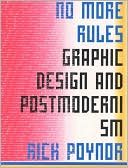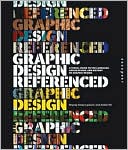No More Rules: Graphic Design and Postmodernism
Search in google:
The past twenty years have seen profound changes in the field of graphic communication. As the computer has become a ubiquitous tool, there has been an explosion of creativity in graphic design; designers and typographers have jettisoned existing rules and forged experimental new approaches. No More Rules is the first critical survey to offer a complete overview of the graphic revolution during the postmodern period. Design critic Rick Poynor tells this story in detail, breaking down a broad, multifaceted field of graphic design activity into key developments and themes: the origins of postmodern design; deconstructionist design and theory; issues of appropriation; the revolution in digital type; questions of authorship; and critiques of postmodern graphic design. Each theme is illustrated by spectacular and significant examples of work produced between 1980 and 2000 that have changed the way in which designers and their audiences think about graphic communication. This generously illustrated book is a vital reference for design professionals and educators as well as for students of graphic design, image-making, advertising, and the visual arts.Author Biography: Rick Poynor founded Eye, the international review of graphic design, and was its editor from 1990 to 1997. His books include Typographica (2001), Typography Now: The Next Wave (2000), and The Graphic Edge (2000). Library Journal As the prevailing style of modernism unraveled and the fundamental tenets of graphic design were questioned, graphic communications experienced a radical transformation. Poynor, editor of Yale's "Monographics" series and the founder of Eye, an international review of design, documents the developments of the last 20 years and provides a context for evaluating contemporary work. Bypassing the awkward (and ultimately futile) task of defining postmodernism, Poynor uses terms and themes such as deconstruction, appropriation, technology, and authorship to categorize his examples and trace the development of the profession. Picking up where R. Roger Remington's American Modernism: Graphic Design, 1920 to 1960 leaves off, this well-written volume is a logical companion piece. In fact, the contrast between the two books is instructional in itself. While several of the 300 color illustrations will be familiar to the graphic design audience, this book is unique in providing much-deserved historical context. Anyone interested in a critical analysis of contemporary communications would benefit accordingly.-Phil Hamlett, Turner & Assocs., San Francisco Copyright 2004 Reed Business Information.
Preface6Introduction81Origins182Deconstruction383Appropriation704Techno965Authorship1186Opposition148Notes172Selected Bibliograph180Index184Picture Credits192








